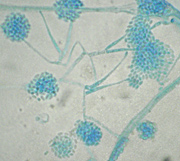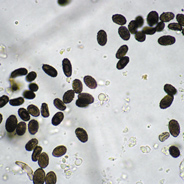
It seems as if everyone’s heard of toxic mold, often from the news. Sometimes stories about toxic mold have been sensationalized, and many people are now afraid they’re seeing toxic mold every time they see any mold in their home.
Most of the time, housemold is not toxic. Most of the time, the mold you see in your home is nothing more than a cosmetic concern. But, not always. Some molds have been associated with ill health.
3-Minute Video: Click To Watch!

Toxic molds and mycotoxins

Some household molds can create toxic substances called mycotoxins during their growth. These molds are called ‘toxigenic’, and are often referred to as ‘toxic molds’. However this term isn’t technically correct, as it implies that the mold itself is toxic.
It’s the mycotoxin that creates negative health effects on the human body, not the mold itself. The reality is that toxic mold can create toxins, but doesn’t always do so. Circumstances have to be right in order for them to create toxins. There’s evidence that toxic molds need specific factors (not just food and water) in order to produce mycotoxins.
When mycotoxins are produced, people can be exposed to them by touching the surface or by inhaling mold or dust particles that have the toxin on them. It’s not known how much of airborne mycotoxins produces a negative effect.
The truth is we don’t know all there is to know about mycotoxins produced in indoor environment.
We know that some mycotoxins are good if utilized well. For example, penicillin is a mycotoxin produced by the mold Penicillium. And cyclosporin, an immune suppressant to treat organ transplant patients is also a mycotoxin.
Mycotoxins have been associated with ill health

But there are many more mycotoxins that we don’t know very much about. Some of these may be the cause of ill health.
Our understanding of the effects of airborne mycotoxins is complicated by the fact that Within the indoor environment, there are many other substances that can affect our health. This means we can’t say with absolute certainty that these toxic molds that have been associated with ill health are in fact the absolute cause of the illness.

However, there have been a fair number of incidences of ill health where exposure to toxic mold occurred. Many symptoms are associated with toxic molds but some symptoms are only speculative.
Some symptoms are:
- asthma
- sinus headache and nasal congestion
- dizziness
- skin rashes and hives
- excessive fatigue
- flu-like symptoms
- ongoing sore throat and chronic cough
- bleeding in the lungs
A simple laboratory test can put your mind at ease. Send us a sample of visible mold or test your home’s air quality for mold, and we’ll tell you whether the mold you see in your home is a toxic mold such as Aspergillus, Stachybotrys or Acremonium, or simply of cosmetic concern. Everything you need to safely take mold samples is included in convenient Homeowner Toxic Mold Test Kits.
Latest posts by Jackson Kung'u (see all)
- Symptoms of mold exposure - September 4, 2015
- Mildew and Moisture in Homes - September 3, 2015
- Mould Removal - September 2, 2015
